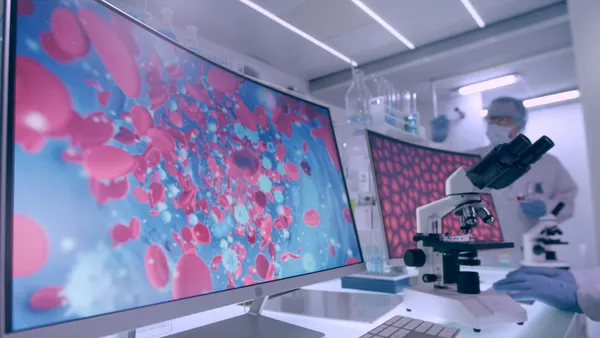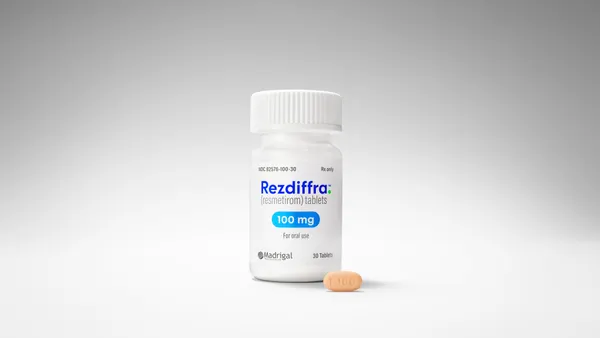16 S e p t e m b e r 2 0 07 VIEW on Marketing COMMUNICATION STRATEGIES D uring any pharmaceutical marketing meeting chances are someone will utter the phrase “today’s post�Vioxx environ� ment,” meaning an environment in which the Food and Drug Administra� tion (FDA) and other regulators are putting greater emphasis on risk determination, assessment, and management. Such enhanced oversight presents greater challenges than ever to successful product development, approval, and marketing.The ongoing struggle for U.S. approval for drugs such as Novar� tis’ Galvus, an innovative oral therapy for people with type 2 diabetes, and Merck &Co.’s Arcoxia, an NSAID highly selective for COX�2 arthritis treat� ment, illustrates how complex it has become to demonstrate a positive benefit/risk profile for an investigational drug in this new, risk�focused world. In the past, bringing a drug to market essential� ly required answering two fundamental questions: is it safe and does it work? Successful drug launch� es required giving these answers to the FDA or the European Medicines Agency (EMEA) as well as to key stakeholders, including practitioners, pur� chasers, patients, advocacy groups, analysts, and the media. Today, a new paradigm has emerged. Greater scrutiny and skepticism of safety data extend throughout the development process. As a result, companies must deepen and continue their own focus on safety through ongoing analyses and stud� ies throughout the life cycle of the product. At the same time, “does it work?” now has evolved into “does it work for me?”This new question demands that companies more clearly define the appropriate patients for the medicine, and how it will fit into clinical practice. But even this is not enough, as stakeholders also ask “is it worth it?” and demand a full explanation of the value proposition within a broader context. They’re comparing the new treatment to the ben� efit/risk profiles of available treatments, making the bar higher for first�in�class medicines.They also are asking whether the condition to be treated is a lifestyle problem or a “real” disease. In the past, these types of value questions were addressed after product launch to determine reim� bursement and use.Today, these questions must be answered before submitting a marketing approval package to the FDA or EMEA. Stakeholders view the answers to all of these key questions against a backdrop of corporate rep� utation. Without basic trust in what the company is saying, successfully addressing these questions is a monumental task. Preapproval Communications R&D standards — the design of trials, endpoint selection, data analyses — create the foundation for responding to safety and efficacy questions, but of almost equal importance is how, when, and to whom a company communicates prelaunch infor� mation. How then should preapproval communications evolve to ensure optimal support of the drug development and regulatory processes? If corporate reputation is the prism through which a drug’s value is measured, then preapproval communications must be planned, executed, and evaluated by how well they build trust. Trust is built on transparency, which means communicating honestly, clearly, regularly, and in a Chandler Chicco Agency & Litmus Prelaunch Communications in a Post�Vioxx World Christie Anbar Chandler Chicco Agency Lisa Stockman Litmus 0907 PVV Layout PROOFS 9/11/07 4:06 PM Page 16 17 VIEW on Marketing S e p t e m b e r 2 0 07 COMMUNICATION STRATEGIES timely manner. This is the guiding principle of prelaunch communications. Applying the principle of transparency to prelaunch communications requires proactively sharing data about potential safety concerns and being forthright with clini� cal disappointments. It requires building internal, cross� functional consensus, which may be a hard sell, but the benefits of such transparency are significant. Opinion leaders and advocacy organizations, over time, will respect a transparent company and be more willing to offer valuable guidance for overcoming chal� lenges. They also may become informed advocates for the drug at launch, or, at the very least, less aggressive critics. Transparency also will pay off with media and ana� lysts, who can stop speculating if they routinely receive information and background from the company, and may produce more balanced and informed coverage. Together, better communications with the media and all stakeholders contribute toward improved relations with the most critical stakeholder of all — the FDA. Prelaunch Success Prelaunch success, guided by transparency, means adjusting a few tried�and�true tactics: Deliver All of the Data It’s time for the industry to move beyond highlighting efficacy with general safety statements. When there are safety concerns with a drug or therapeutic class, fully communicating safety data during the lead up to regula� tory approval can build understanding among key stake� holders who feel they’ve been informed. Full disclosure is critical. Mold the Message Sooner With financial futures riding on drug development, media and analysts now report on results from early tri� als, which presents an opportunity and a challenge. The opportunity is to get the message right sooner and posi� tion the brand before someone else does.The challenge is that data are not yet fully available, making it difficult to know if results will support the brand messages. It is, however, possible to define the messages so they may be tailored and released as new data become available. Drive a 360�Degree Dialogue It always has been critical to get stakeholders on board in the prelaunch phase. What has changed is the need to engage and learn from both supporters and crit� ics. Such input provides a 360�degree perspective that allows marketers to better understand both the positives — why the brand will be welcomed and where it will fit — and the negatives that they will face. It is the hold� your�friends�close�and�enemies�closer approach and it works. Communicate Openly with Media and Analysts Open and transparent communications with media and analysts are even more important in this new era. This will go a long way toward setting expectations, pro� viding perspective, and re�assuring media and analysts that the company is not trying to hide or “spin” the story. Avoid releasing data that have not been vetted through a peer�review process, but as soon as possible, share the news. In a post�Vioxx world, open and timely communica� tions are mandatory and need to be viewed as an inte� gral part of the product development and regulatory processes to give medicines the best chance of reaching the patients who need them. # CHANDLER CHICCOAGENCY (CCA), NewYork, an inVentiv Health company, is a healthcare specialist public relations agency with offices in London,Washington, D.C ., Los Angeles, and Paris. LITMUS, a division of Chandler Chicco, specializes in data�driven communications, medical marketing, and stakeholder development. For more information, visit ccapr.com. Trust is built on transparency, which means communicating honestly, clearly, regularly, and in a timely manner.This is the guiding principle of prelaunch communications. 0907 PVV Layout PROOFS 9/11/07 4:06 PM Page 17
An article from


Prelaunch Communications in a Post-Vioxx World
Filed Under:
Commercialization







